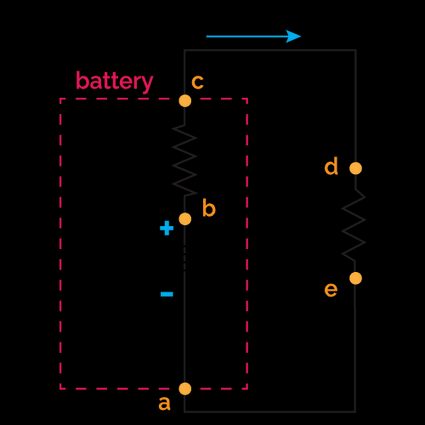Internal Resistance Calculator
Omni's internal resistance calculator allows you to calculate the resistance offered by a voltage source to the flow of current through it.
Do you know that both trucks and motorcycles use batteries of identical electromotive force (emf = 12-V)? However, the truck battery can deliver a much larger charge than the motorcycle one due to its smaller internal resistance.
To know more about internal resistance, continue reading this article. You will learn:
- What is internal resistance?
- How to find the internal resistance of a battery.
- What is the internal resistance of an ideal voltage/current source?
If you want to calculate the resistance of a conductor, head on to our wire resistance calculator.
What is internal resistance – internal resistance definition
The internal resistance of a voltage source (e.g., a battery) is the resistance offered by the electrolytes and electrodes of the battery to the flow of current through the source.
The internal resistance of a new battery is usually low; however, as the battery is put to more and more use, its internal resistance increases.
In the next section, we will learn how to find the internal resistance of a battery.
How to find the internal resistance of a battery – internal resistance formula
Let us consider a cell of electromotive force (emf) and internal resistance .

If we connect this cell to an external load resistor (see figure 1), the total resistance () of the circuit becomes:
And according to the Ohm's law formula, the current through the circuit will be:
Rearranging the above equation, we will get the equation for internal resistance:
If we know the current through the circuit, we can also calculate the terminal voltage of the battery.
The terminal voltage of a battery is the voltage output measured across its terminal. The above equation shows that the larger the current, the lower the terminal voltage. Similarly, the smaller the internal resistance, the larger the terminal voltage.
Calculating internal resistance – an example
As an example, let us calculate the internal resistance of a cell of emf . Let the current in the circuit be when a load resistance of is connected across it.
-
We are given the load resistance , the emf of the cell , and the current through the circuit .
-
Substituting these values in the formula for internal resistance, we will get:
-
Hence, the cell's internal resistance is .
-
We can also calculate the terminal voltage as:
How to use the internal resistance calculator
Now let us see how we can solve the same problem using our internal resistance calculator:
-
Enter the value of the load resistance .
-
Input the emf of the cell () and the current through the circuit () in the respective fields. You can choose the drop-down menu to choose the appropriate unit of current.
-
The calculator will display the cell's internal resistance () and the terminal voltage ().
If you are interested in calculating the life of a battery based on its capacity and the energy consumption of a device, we recommend checking out our battery life calculator.
How do I calculate the internal resistance of a battery?
To calculate the internal resistance of a battery, follow the given instructions:
-
Find out the current through the circuit.
-
Divide the emf of the battery by the current through the circuit.
-
Subtract the load resistance from the value obtained from step 2.
-
You will get the internal resistance of a battery.
How do I calculate terminal voltage of a battery?
To calculate the terminal voltage, proceed as follows:
-
Multiply the current through the circuit by the battery's internal resistance.
-
Subtract the value from step 1 from the emf of the battery.
-
Congrats! You have calculated the terminal voltage.
What is the internal resistance of an ideal voltage source?
Zero. According to Ohm's law, the resistance is given as r = V / I. The voltage across an ideal voltage source is constant and independent of the current flowing. This means that the V-I curve will be a straight line with zero slope. Hence, we can conclude that the internal resistance of an ideal current source is zero.
What is the internal resistance of an ideal current source?
Infinite. The current generated by an ideal current source is independent of the voltage or load resistance applied across it. If the internal resistance of the current source is infinite, any change in the load resistance will not affect the output current from the source.